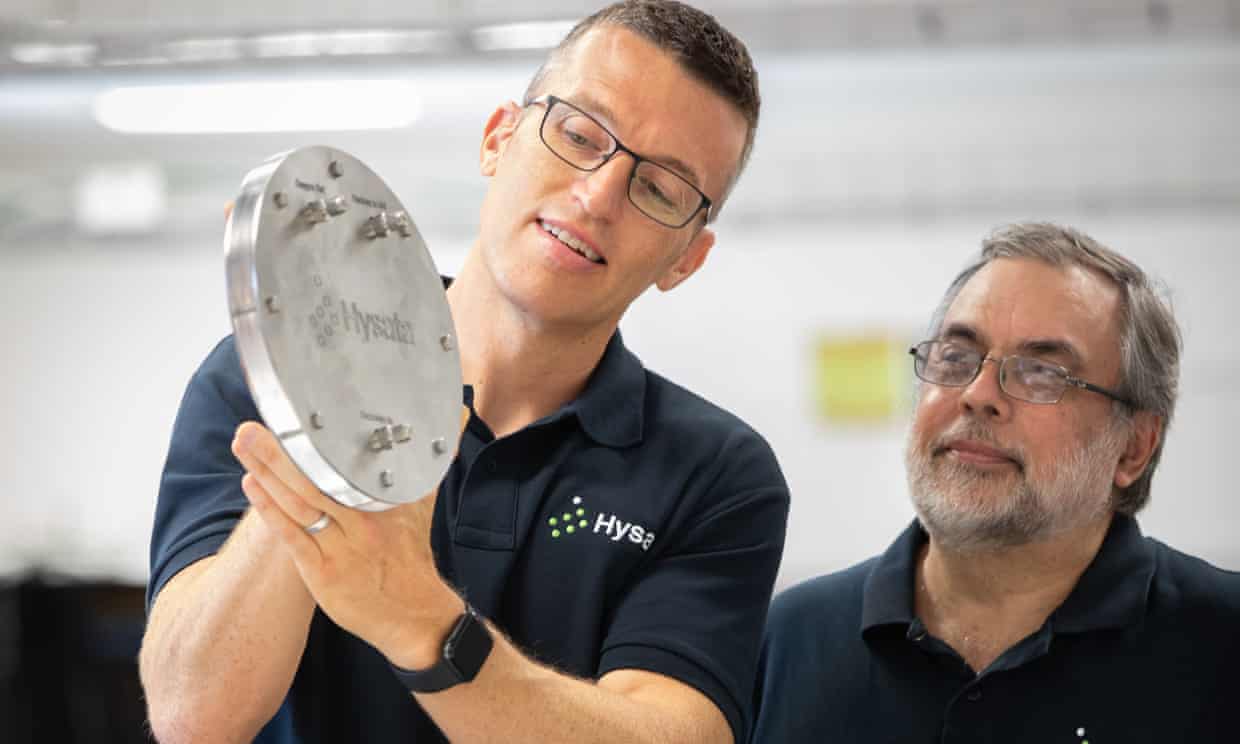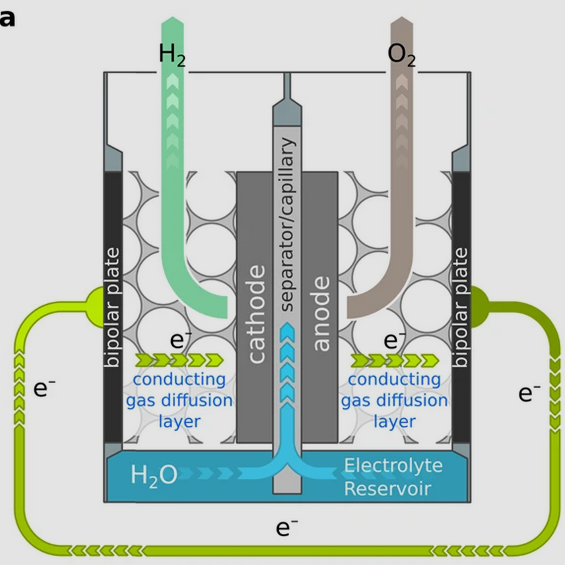Efficient electrolysis makes hydrogen economy look good
Australian technology developed at University of Wollongong and being commercialized by Hysata offers most efficient/cheapest energy conversion to date.

by Peter Hannam, 16/03/2022 in The Guardian
Australian researchers claim ‘giant leap’ in technology to produce affordable renewable hydrogen: Morrison government’s hydrogen stretch goal of $2 a kilogram to make the fuel competitive could be reached by 2025, Hysata says.
Featured Image: Capillary-fed electrolysis cell – Schematic depiction showing how the bipolar plate and conducting gas diffusion layer in the capillary-fed cell were combined into a single bipolar plate structure that comprised a sheet of Ni with many small holes to allow evolved gases to exit the electrode. The anode electrode was welded to its bipolar plate. The cathode was compressed against its bipolar plate and not welded / Source: A high-performance capillary-fed electrolysis cell promises more cost-competitive renewable hydrogen, by Hodges, et al. 15/02/2022 in Nature Communications..
